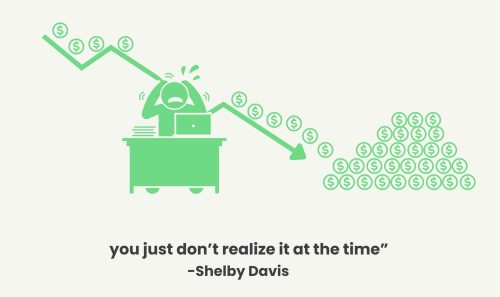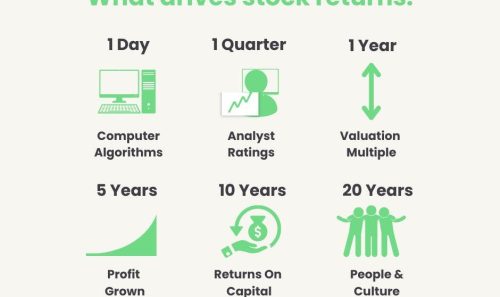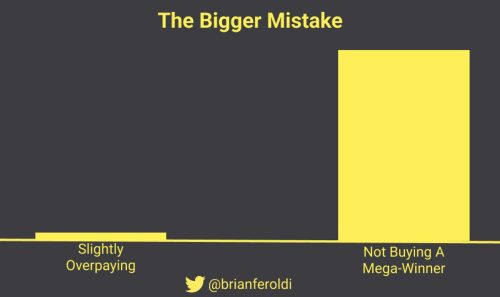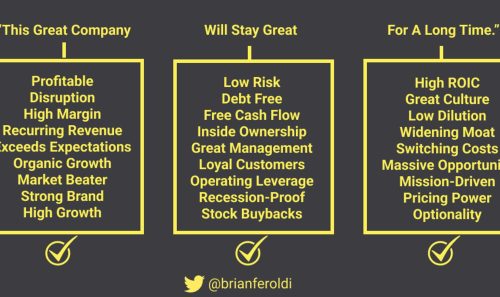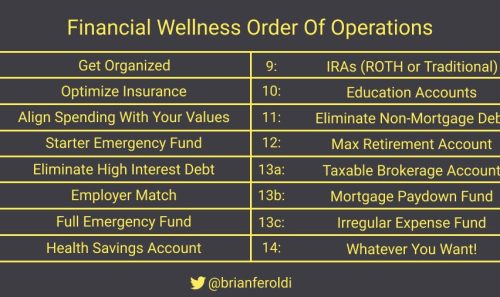🧠 How To Decode Management’s Jargon
View Online | Sign Up | Advertise
Friends,
If you invest in individual stocks, we highly recommend you listen to the company’s conference calls.
Hearing management’s tone, reaction to questions, and overall demeanor is invaluable.
But there is one part of these calls that we can’t stand: the jargon.
Lots of management teams use innuendos and acronyms when discussing their company’s results. Understanding what’s actually being said can be challenging.
For instance, DataDog reported earnings last week. The cloud software company’s forecast was disappointing. The stock fell over 20% in response.
The main culprit: management said that large clients are “optimizing” their use of DataDog’s tools. Some version of that word (“optimize”) was used 40 times during the call.
It sounds like a good thing. But is it?
NO!
When you — as a customer — “optimize” a tool you already have, it means you’re trying to squeeze every ounce of usefulness out of it before paying more.
Think of it this way: during the Great Recession, Americans “optimized” their used cars like never before. That’s just a fancy way of saying they waited to replace their cars because they wanted to save money.
The same thing is happening with many software companies right now. Lots of customers are “optimizing” their spending. That’s causing DataDog’s growth to be much slower than has been the recent past.
Here are some other common terms you may hear on these calls (and what’s actually being said):
“Color” = To provide more details on a subject.
“Churn” = Customers who stopped buying from us.
“Double click” = Provide more details.
“Elongated Sales Cycle” = Demand is weak.
“Green Shoots” = We’ve invested a lot but have not seen much return yet.
“Inorganic growth” = We grew from mergers & acquisitions
“Investing in our people” = Employee costs are rising fast.
“Move the needle” = Increasing sales enough to change the growth rate.
“Low hanging fruit” = Easy opportunities for improvement.
“Land and expand” = A small initial sale that leads to larger opportunities.
“Investing in Price” = Competitive pressures forced us to lower prices.
“Organic growth” = Increasing sales of internally developed products.
“Softness” = Demand for our products & services is weak.
“Streamline” = We fire a bunch of employees.
“We’ll take this offline” = I haven’t scripted an answer to your question
We hope that decoding these terms will help you to read between the lines the next time you hear a management team talking in gibberish.
Wishing you investing success,
– Brian Feroldi, Brian Stoffel, & Brian Withers
P.S. If you have 30 seconds, we’d love your input on what financial concepts you want to learn. Let us know by taking this quick survey.
Sponsor this Newsletter
Guess what? You’re reading promotional content in a newsletter. Sponsoring influencer newsletters, like mine, is a great way to reach engaged and targeted audiences. It will build your brand — whether that is your personal brand or your business.
The Long Term Mindset newsletter is part of the ConvertKit Sponsor Network. This network connects businesses to audiences of newsletter readers. For example, you can sponsor Long Term Mindset and connect with about ~80,000 people with similar interests to yours.
One Simple Graphic:
|
|
One Piece of Timeless Content:
How much should I diversify my investments? This is a question every investor needs to answer for themselves. Luckily, Aswath Damodaran, a professor at the NYU Stern School of Business, provides insightful guidance in this 2011 blog post that is still relevant today.
One Thread:
We love it when people on Twitter share their stories and what they learned. Andy’s journey to becoming a millionaire provides valuable insights for those seeking financial independence.
|
One Resource:
Did your parents have “the talk” with you as you were becoming a teenager? Not the birds and the bees; we’re referring to the talk about money.
Talking with family or even your spouse about money can be uncomfortable, but Carl Richards and the New York Times teamed up to publish a group of articles to help you out (for free!)
One Quote:
|
|
More From Us:
👨🎓 NEW! Need help getting your personal finances in order? Click here to start our 5-day Financial Wellness email course. It’s completely free.
👨🎓 Did you miss out on this cohort of Valuation Explained Simply? You can purchase the replays & materials here.
📗 If you’ve read Brian Feroldi’s book, he’d love a review.
👨🎓 Want to learn how to read financial statements? Purchase the replays & materials for our live course Financial Statements Explained Simply.


